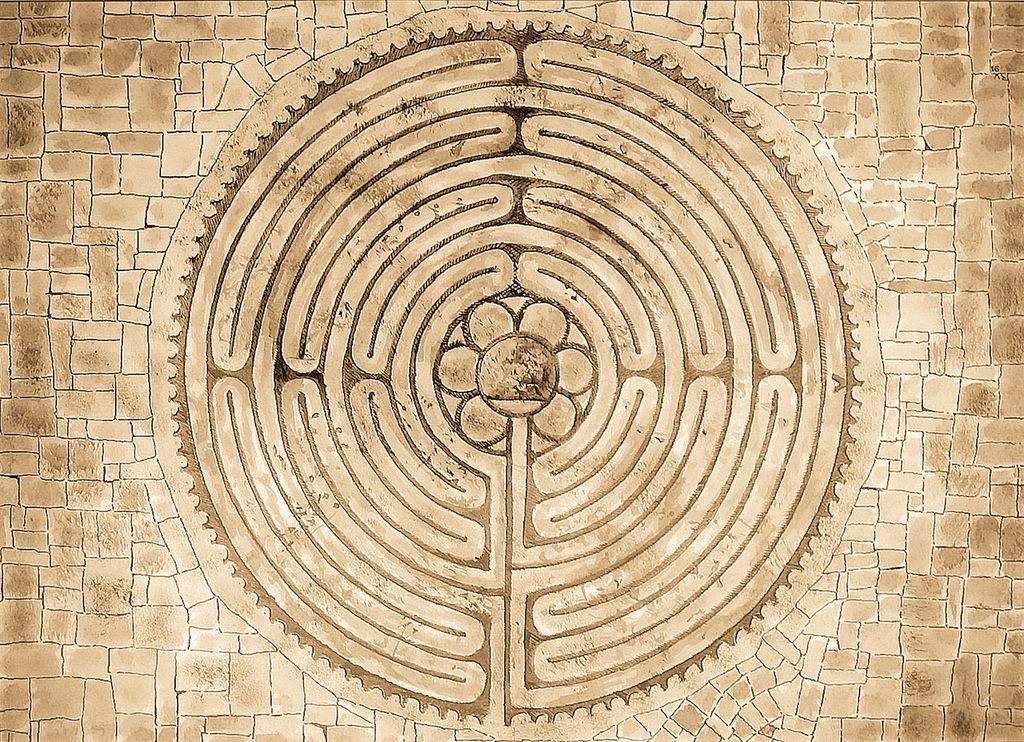The Fourth Way school that is the Fellowship of Friends[1] studies the six cosmic processes outlined by Peter Ouspensky in A Record of Meetings and A Further Record. His student, Rodney Collin, described the six processes in detail in The Theory of Celestial Influence, written after Ouspensky’s death.
Collin notes that this is not a new idea:
The principle that six cosmic processes, universally applicable, must result from the interaction of three forces was fully recognized by 17th-century alchemy, whose theory and practice was based on the six alchemical operations—coagulation, dissolution, sublimation, putrefaction, separation, and transmutation.
– Rodney Collin, The Theory of Celestial Influence
Three forces combine in six different ways to create six cosmic processes. Each process has a different nature—and carries a different result.
The three forces can be termed according to their relative weight, or mass. Collin speaks of them as “sun, planets, and earth,” and also as “life, form, and matter.”
An Outline of the Six Cosmic Processes – Growth, Digestion, Elimination

The cosmic process of growth is clear when a child is born. Here, the life spirit plunges into matter—the unborn child—and takes on form, growing to maturity.
Even a corporation may follow the process of growth, gathering form and enlarging, expanding in scope. The key is that growth occurs unconsciously and involuntarily.
In the process of digestion, matter is passive. A vital force (‘life’) acts upon it to raise or transform to a higher level (‘form’). Digesting food and cooking are examples, as are other activities involving refinement or distillation. A more psychological kind of digestion can occur when one receives wisdom or knowledge.
Collin notes that digestion is not automatic, that nature does not assure the process at all: “It depends entirely on the degree of consciousness of the receiver.”
In the process of elimination, the life force breaks form back down into inert matter. The human body breaks food down, into what it can use (via digestion) and what it cannot. Elimination results in an unusable waste product with no further possibility of transformation.
Psychologically, our “food” is our experiences, and the impressions we receive. What we cannot use—or transform—of our experiences, we need to eliminate. In ordinary life, people tend to eliminate hard-to-digest experiences through buffers, tears, or negative emotions.
[For more on this specific tendency, see our FourthWayToday article by Walther Sell, https://fourthwaytoday.org/the-process-of-crime/.]
An Outline of the Six Cosmic Processes – Crime, Healing, Regeneration
The process of crime needs special study for a student of awakening. Crime occurs when form overcomes life and reduces it to matter, making it dead, or less alive. Those who have experienced organized religion sometimes feel that the form of the church has overcome the spirit. Crystallizing of form, when it happens, prevents further life. Psychologically, if the expression of negative emotions becomes a habit, it represents the beginning of the death of essence—negativity has overcome life.
The process of healing can be confused by spiritual seekers with the process of regeneration. In healing, form seeks to recover itself to go on living. In healing, sick matter seeks to rediscover its original form given by nature. If healing occurs, it can once again serve as a channel for life.
However, in regeneration, form initiates the change—a change not of ‘matter’ into better or more perfect matter—but a change representing the birth of new being. Here form is active, and matter is passive, to enable this new life.

church door, Rome
In a school, the teacher, an older student, or one’s own inner “steward” represent form, in this triad. A student receives indications and exercises to work with, to study himself, to separate from himself. To create new being, one subjects one’s lower self to school rules. Not to learn new knowledge (which would be digestion, distillation), but to create new life.
Indeed, regeneration has a magical property. It is creation itself. In personal awakening, regeneration requires one to form a deliberate aim capable of reconciling opposing forces.
From Rodney Collin on the Six Cosmic Processes
Should a permanent emotional aim become created, however, there becomes possible an intense struggle between the constructive and destructive sides of man. This inner division—which may be felt as conscience—produces friction. And inner friction is precisely that by which consciousness may be generated, just as physical friction is that by which heat and light may be generated. Thus the process of regeneration always begins by a division, a separation.

The more a man separates his aim from the habits and failings of his body and personality, and the more he forces the latter, however unwillingly, to serve that aim, the more intensely will he become conscious of himself. Gradually, his most hidden weaknesses, self-indulgences, excuses, and on the other hand his longings, capacities and aspirations will emerge into the light of consciousness.
– Rodney Collin, The Theory of Celestial Influence
[1] Website: https://www.livingpresence.org

Orazio Sorgonà
I myself do understand quite well the six processes, obviously for how much I do, in ‘mathematical’ terms of forces, the three places in a triad , and of passages of influences. While I find it very hard to describe them verbally.
I also had then noticed how Rodney Collin, who is a very good writer, must apply all his expertise in this art, to give some verbal depicture of them.
Probably they belong to the things that can be thought of, yet do not have an immediate verbal counterpart, which are the vast majority of things that can be thought of.
It takes some ‘poetry’ to tell of them in words.
This, itself, is a good reminder for me to go indeed beyond words.